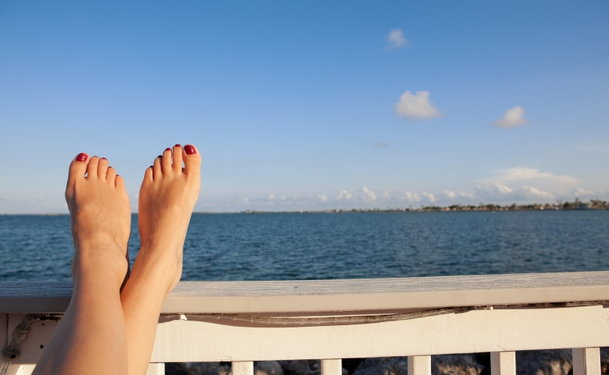Varicose veins may not be 100 percent preventable in every instance, because some people are genetically predisposed to developing them. However, there are some things that may help delay or reduce your chances of forming new varicose veins, and you could even prevent the ones you have from getting worse.
Preventing Varicose Veins: What to Do and What to Avoid
Combating varicose veins is not easy, especially when you are already have them, but when you know what to do (and not do), you are more equipped to handle the ones you have and prevent new ones from developing.
What to do
- Break up long periods of sitting or standing. Experts recommend changing positions at least every half-hour — and that includes when traveling by plane or car. If you're sitting, get up and walk around if you can. If you can't, then at least try to stretch your legs and flex your feet a bit. People who have a job that requires long periods of standing are at special risk. If you can't avoid that, at least try to shift your weight from one leg to the other, so it's not always on one or both legs.
- Exercise. Focus on exercises that help strengthen and pump blood through your legs, such as walking, swimming, climbing stairs, biking, etc. It increases leg strength and vein strength and helps keep blood from pooling in the veins in your legs.
- Kick back. When you're resting, put your feet up when possible. Keeping them elevated helps take the pressure off the veins in your legs.
- Maintain a controlled body weight to reduce excess pressure on your legs.
- Wear flats or shoes with lower heels to improve your calf muscles, which is better for circulation.
- Eat a high-fiber, low-sodium diet to help avoid constipation (a factor which can contribute to varicose veins) and swelling.
- Use sunscreen on your face to help limit the formation of facial spider veins.
At the same time, wearing compression stockings can increase pressure to the veins in a good way. If your doctor recommends you wear them, they can help reduce swelling and pooling and possibly reduce the risk of forming clots deep in the veins.
What to avoid
- Don't keep your legs crossed when sitting.
- Try to limit your use of high heels.
- Avoid wearing clothing that constricts circulation at the waist, groin, or legs (think super-tight jeans).
- Avoid excessive heat on your legs, such as hot tubs and hot baths. Heat will tend to increase vein distention and lead to more pooling of blood.
- Taking medications that contain estrogen and progesterone, such as oral contraceptives or medicines used for hormone-replacement therapy, may add to the risk of developing varicose or spider veins.
Factors That Can Cause Varicose Veins
There are a number of factors that can determine whether you develop varicose veins — some are within your control and others are not. Here are just a few that are uncontrollable:
- Heredity — This is the most common reason for varicose veins. If your mom or dad has varicose veins, you are likely to develop them too, either early or later in life.
- Gender — Women are more widely affected than men. This is because estrogen weakens vein walls.
- Age — Varicose veins and spider veins can appear at any age, but veins tend to weaken and not function as well as you get older.
- Pregnancy — Sure, pregnancy is a choice, but there is no way to predict whether you will develop varicose veins during your pregnancy, although heredity may be an indicator. Pregnancy can play a role in the formation of varicose and spider veins. There are hormonal changes and an increase in blood volume. Plus, the enlargement of the uterus increases pressure in the veins. The good news is that varicose veins that form during pregnancy spontaneously improve in some cases and can even disappear a few months after delivery.
Reviewed February 7, 2017


